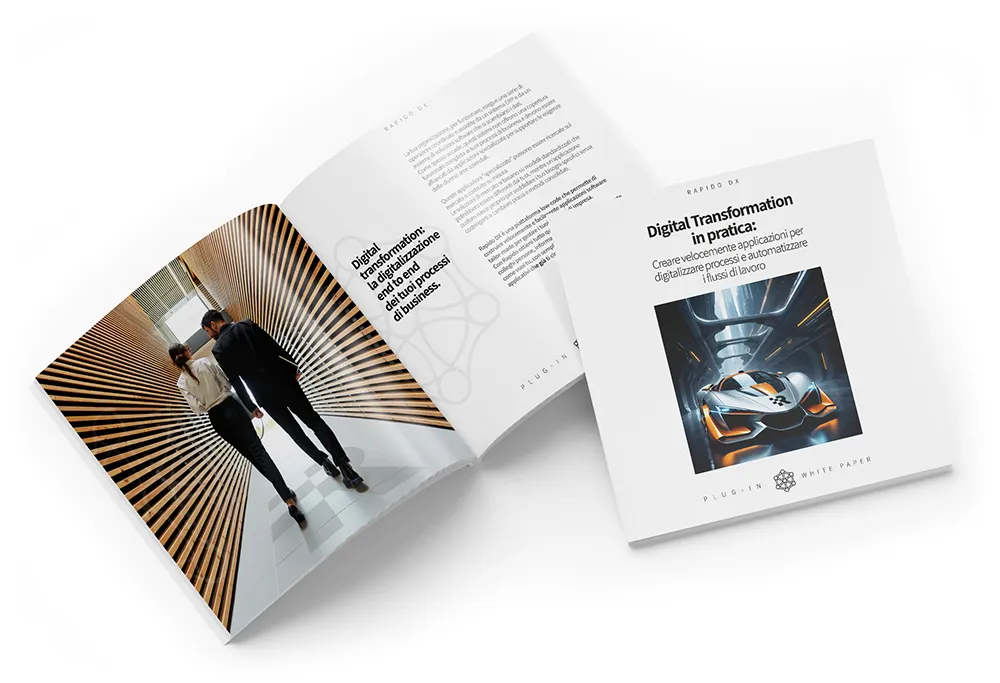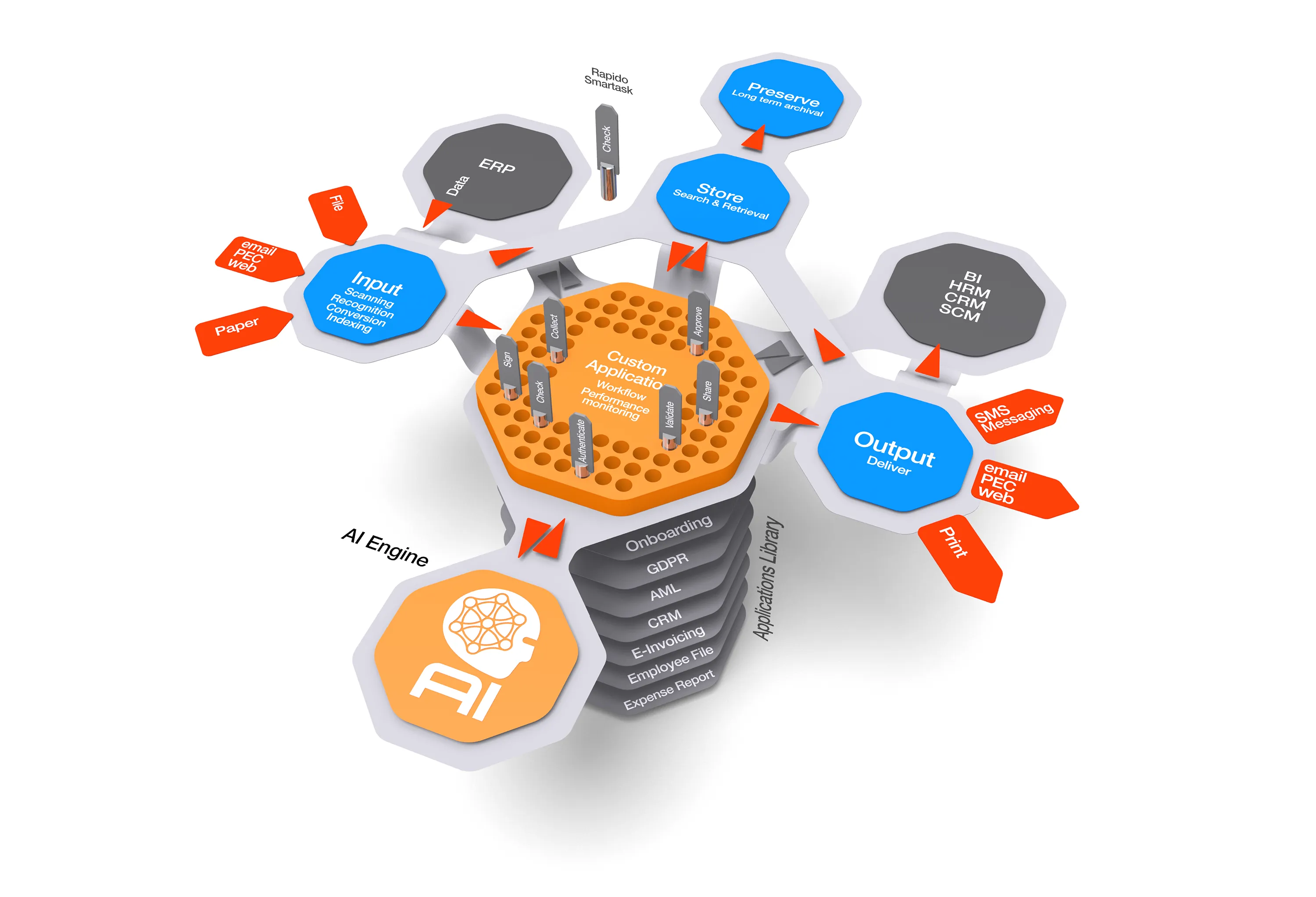Rapido DX is a low-code platform that allows you to quickly and easily build tailor-made software applications to manage your business processes.

Download the Whitepaper
Fill out the form to request the free Whitepaper and receive more information.
Why Rapido DX: all the advantages of a low-code platform with integrated AI
Rapido DX is a low-code platform that allows you to create custom applications and workflows with visual tools and minimal coding. Compared to no-code platforms that promise users they can build applications themselves without development skills, Rapido is a tool dedicated to IT experts, professionals who can quickly and inexpensively build custom applications with complex functionality that are perfectly integrated into the corporate IT environment.
On the CIO’s side
With Rapido DX, the CIO can respond quickly to internal requests while maintaining full control of the corporate application portfolio. Thanks to a simulation environment, department managers can still make a decisive contribution to all stages of software development with their input and feedback.
How Rapido-DX works
At the heart of the architecture is a logical ‘motherboard’ that allows you to quickly create customised applications and processes by sequencing predefined software routines (smartasks).
By assembling smartasks, software objects dedicated to specific tasks, you can quickly create functional prototypes to test and refine. To manage very specific features, you can always add ad hoc scripts and add-ons.
Once the inputs, activities and expected outputs have been defined, Rapido DX autonomously generates the operating sequences and all the links between data, resources and applications, using predefined APIs and preconfigured software connectors.
Each department can independently manage the flow of activities, indicating the users who must carry them out and the managers who must approve them.
An advanced platform is not enough.
That’s why we created the R-Teams.
We have created agile and responsive development teams characterised by a practical approach and a spirit of loyal and transparent collaboration. Their task is to achieve the goal through continuous dialogue with the customer, favouring direct communication over repeated formalisation.
The working method is based on the progressive refinement of the solution through frequent releases of functional prototypes that the customer can evaluate and request corrections or modifications.
If the initial assumptions change during the project, this method makes it easier and less expensive to ‘adjust the aim’.




